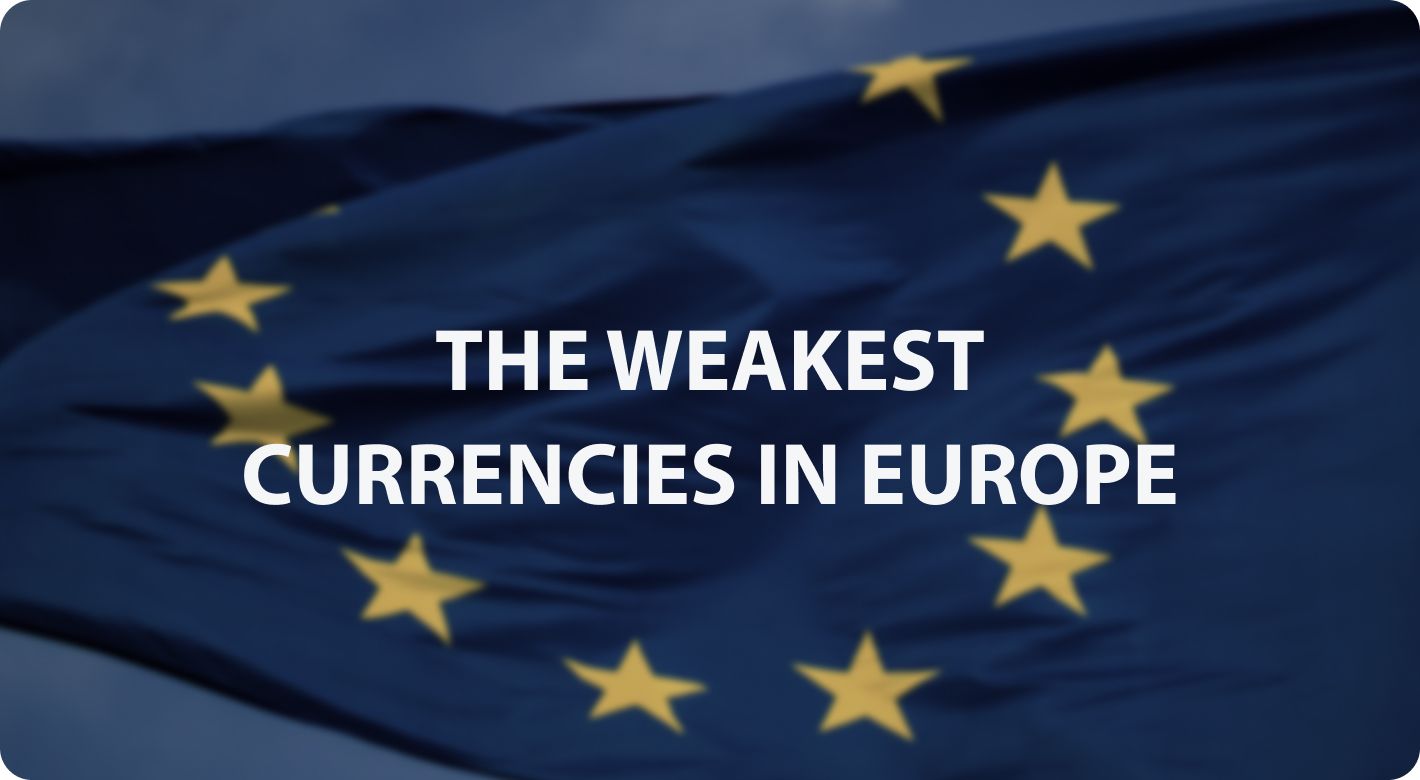FXOpen

Europe is home to some of the world’s strongest currencies, such as the euro, the British pound, and the Swiss franc. While many European currencies are stable and robust, some find themselves facing economic challenges that lead to them being the weakest in the region.
These currencies are weak for various reasons, including high levels of informal economic activity, dependence on remittances and exports, and political instability. This FXOpen article focuses on the six weakest currencies in Europe.
6 Weakest Currencies in Europe
You will find a list of European currencies ranging from strongest to weakest. Even though the Great British Pound is one of the leading currencies in the region, we decided not to put the weakest currency against GBP. The article compares the values of the European legal tenders to the US dollar. The USD remains a typical benchmark for currency valuation.
*The rates are effective on the 27th of October, 2023.
6. Moldovan Leu (MDL)
1 MDL = 0.0551 USD
Moldova, one of Europe’s poorest nations, has the Moldovan leu (MDL) as its currency. The main challenges stem from its fragile economy and political instability. Many believe it is a region forgotten in time. The Moldovan leu’s weakness is further exacerbated by the country’s dependence on remittances from Moldovans working abroad. The economy also relies on the exports of agricultural products to a great extent.
5. Macedonian Denar (MKD)
1 MKD = 0.0118 USD
North Macedonia, where the denar is the official currency, has a relatively small and less diversified economy, which relies heavily on a few sectors, such as manufacturing and agriculture. This makes it vulnerable to economic shocks. Limited foreign direct investment inflow has been an issue for North Macedonia. The country faced periods of political instability and uncertainty, which negatively impacted investor confidence and economic stability. Frequent changes in government and political disputes contributed to this instability.
4. Albanian Lek (ALL)
1 ALL = 0.0100 USD
The Albanian lek is the currency of Albania. The nation’s economic well-being relies significantly on the financial support sent back by Albanians employed overseas. High unemployment rates result in an increased informal economic activity. The Albanian government tries to control the currency’s value. Additionally, Albania’s political environment has faced instability, which has an impact on the value of the ALL.
3. Serbian Dinar (RSD)
1 RSD = 0.0090 USD
The Serbian dinar is affected by economic factors such as a trade deficit, high public debt, and political uncertainty. The currency struggles with inflation, which leads to a decline in the purchasing power of the RSD. Serbia’s attempts at currency stabilisation have been met with mixed success, as it faces economic challenges like structural reforms and political tensions in the region.
2. Hungarian Forint (HUF)
1 HUF = 0.0027 USD
The Hungarian forint is weak because of the country’s reliance on foreign-denominated loans and a high level of public debt. Hungary’s economic policy has often been a subject of debate. The economic measures, such as imposing special taxes on certain sectors, raise concerns among international investors and financial institutions. Hungary exports machinery and equipment, and it also has a developing tourism industry.
1. Armenian Dram (AMD)
1 AMD = 0.0024 USD
The weakest currency in Europe is the Armenian dram, the official currency of Armenia. Armenia, landlocked in the South Caucasus, struggles with political instability and economic challenges. The country’s economy is heavily dependent on the export of precious metals and stones, as well as remittances from Armenians working abroad. The AMD has been relatively stable in recent years, but it is still the weakest currency in the region.
Final Thoughts
It’s essential to analyse the value of the strongest and weakest currencies today for informed financial decision-making. In Europe, conversion rate fluctuations are crucial factors for traders and businesses operating in the continent, as they impact financial transactions and planning. However, it’s worth noting that weakness is relative, and the currencies mentioned in the article may still be strong compared to currencies in other parts of the world.
Additionally, converting the weakest legal tender in Europe to US currency can be a strategic move for traders looking to diversify their portfolios and manage exchange rate risks. You can open an FXOpen account and get the best trading experience — trade with spreads from 0.0 pips, use advanced analytical tools, and read expert market analysis. Find multiple currency pairs on the TickTrader trading platform.
This article represents the opinion of the Companies operating under the FXOpen brand only. It is not to be construed as an offer, solicitation, or recommendation with respect to products and services provided by the Companies operating under the FXOpen brand, nor is it to be considered financial advice.
Stay ahead of the market!
Subscribe now to our mailing list and receive the latest market news and insights delivered directly to your inbox.








